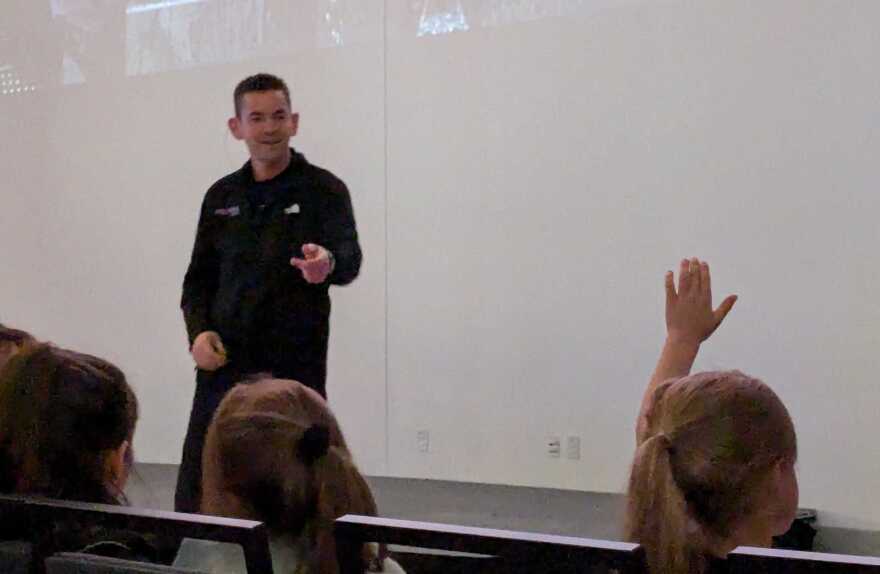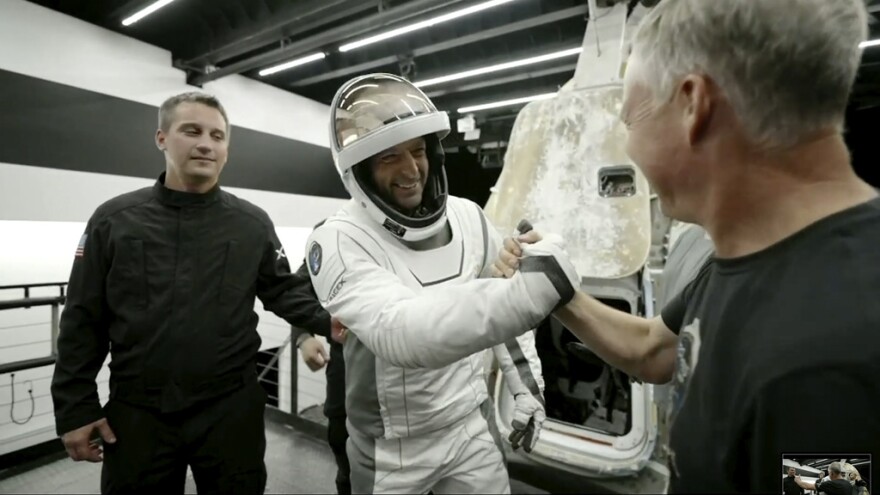ALLENTOWN, Pa. – Two months after returning from a history-making trip to outer space, Lehigh Valley entrepreneur Jared Isaacman stopped by the Da Vinci Science Center on Sunday to speak about his journey.
In September, Isaacman, retired Air Force pilot Scott Poteet and SpaceX engineers Sarah Gillis and Anna Menon spent nearly five days orbiting Earth as part of Polaris Dawn, a private spaceflight jointly funded by SpaceX and Isaacman.
During their journey, Isaacman and his crewmates traveled further from Earth than anyone since the final Apollo mission.
The 41-year-old Isaacman and Gillis performed the first spacewalk during a commercial spaceflight.
“Anyone who's had a chance to go to space, you're one of basically 600 people who have had that unique perspective and experience,” said Isaacman, founder of Upper Saucon Township-based Shift4, a credit card processing company. “It's an obligation to take that back and share it with the community.”
“Anyone who's had a chance to go to space, you're one of basically 600 people who have had that unique perspective and experience. It's an obligation to take that back and share it with the community.”Jared Isaacman
Explorer, philanthropist
Isaacman is no stranger to the Da Vinci Science Center, which opened in its new downtown Allentown building earlier this year. He funded Da Vinci's Isaacman Next Generation Science Institute and the educational programs it provides.
During a question-and-answer session in the Da Vinci Center’s Curiosity Hall, Isaacman recounted his most recent trip to space to a room full mostly of excited kids, along with a handful of equally curious adults.
Some questions dealt with some of the greatest challenges facing future spacefarers. (How would a future Mars colony manage the societal divides that affect the earthbound world? By carefully screening inhabitants to make sure they can handle living at least nine months from Earth.)
Others were interested in the more mundane aspects of life off Earth – the best things Isaacson ate on board were the apple strudels included in the crew’s packaged meals, he said, and it’s sometimes a challenge to find objects that floated around the capsule in microgravity.
He recounted the rewards and the challenges of space travel, from the difficulty sleeping, possible spacesickness and less-than-stellar food to the feeling of sticking his head out of his capsule hundreds of miles above Earth.
The most gratifying questions, Isaacman said, come from kids who want to know how they can become an astronaut or otherwise work on future space exploration.

New era of innovation
He was one of them when he was a kid in New Jersey, captivated as a kindergartener by books about the space shuttle program.
Today, he said, the most gratifying part of the Polaris flights is the chance to contribute to the future of space travel. He and SpaceX see the program as some of the first stepping stones to the future of commercial space travel, including permanent settlements on Mars.
In addition to the first private spacewalk, the Polaris Dawn crew conducted tests of a new spacesuit design, research on how humans are affected by the high radiation of space and evaluations of new communications equipment.
“What we did on Polaris Dawn was very akin to the early space race: a simple spacewalk, going high into an area we have less familiarity about, testing new comms,” he said.
The same sort of testing that NASA conducted decades ago is now paving the way toward a new, lower-cost, privately-owned space fleet “not for the few, but for the many,” said Issacson, that will usher in a new era of innovation.
“We have no idea what we stand to learn, or how many humans that will necessitate in space, or what that economy looks like, but we know we're closer now to being able to experiment with those things than ever,” he said.
Isaacman has two more trips to space scheduled as part of Polaris. The first, in about two years’ time, he estimates, will test further refinements to SpaceX’s new spacesuit design and conduct more research.
The following flight, the final mission of the Polaris program, will be the first crewed flight of SpaceX’s Starship rocket, designed to carry explorers to Mars and beyond.


